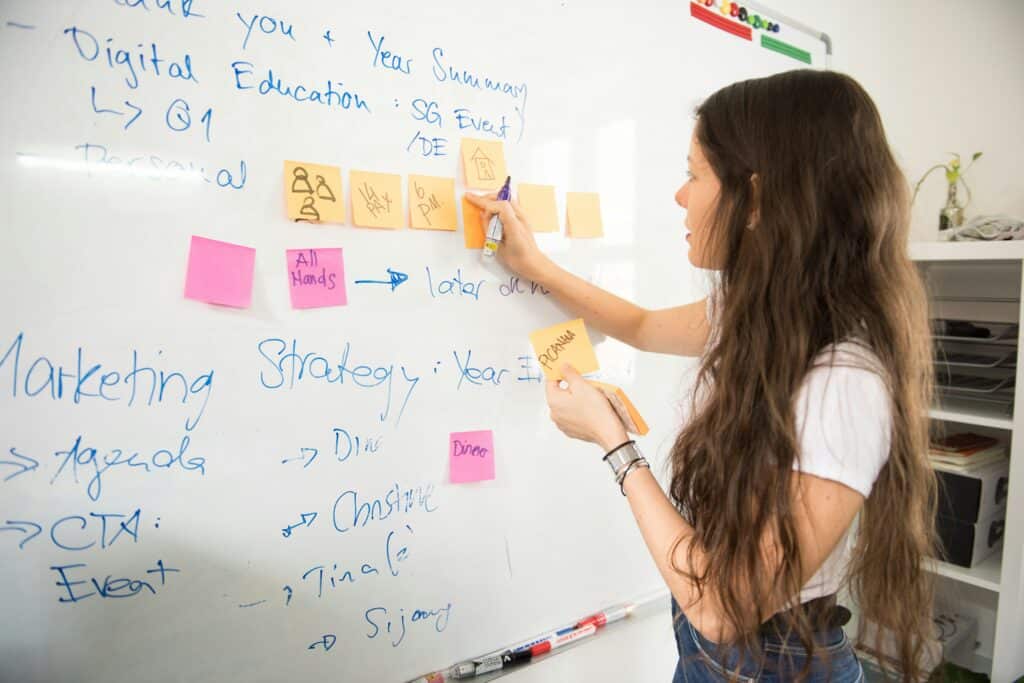A Student’s Story
Imagine a student named Sam who tries hard in class every day. When the teacher gives a reading assignment, Sam’s classmates finish quickly, but Sam stays stuck on the same page. He reads the words over and over, but they don’t seem to make sense the way they do for others. Sam begins to wonder if he isn’t smart, even though he is trying just as hard as everyone else. What Sam is experiencing is similar to what many students with learning disabilities go through every day.
What Learning Disabilities Mean

Learning disabilities are not about being less intelligent—they are about how the brain understands and processes information. A student with a learning disability may struggle with reading, writing, math, memory, or focus, even though they can learn in other ways just as well as their classmates. For example, dyslexia makes reading and spelling hard, while dyscalculia makes math feel confusing. Dysgraphia affects writing, and ADHD can affect focus and organization. These differences don’t mean someone cannot succeed; they just need different approaches to learning.
How Common Are Learning Disabilities?
In the United States, about 8.8% of children ages 6 to 17 are diagnosed with a learning disability (National Library of Medicine). Among students who get special education, 32% receive services for specific learning disabilities such as dyslexia, dysgraphia, or dyscalculia (NCES). Globally, about 15% of students experience a learning disability (Crown Counseling). These numbers show that millions of students face similar struggles, which means Sam is not alone.
Why Understanding Matters
Even though learning disabilities are common, many people still misunderstand them. Students with these challenges may feel embarrassed or left out if they don’t get the right support. Teachers and parents who understand what learning disabilities really are can help students succeed with strategies that fit their needs. By spreading awareness, schools can make classrooms places where every student feels capable of learning and growing.
Signs, Effects, and Support
Recognizing the Signs

Learning disabilities often show up in the classroom, but they can also affect daily life. A child may have trouble tying shoes, remembering the steps to complete a chore, or following multi-step instructions. In school, the same child might read well one day but struggle the next, which can confuse teachers and parents. These ups and downs are not about effort—they are signs of how learning disabilities can change the way the brain processes information. Spotting these early helps schools give students the support they need.
Common Symptoms of Learning Disabilities
Some signs are easy to notice if teachers and families know what to look for:
- Reading slowly, skipping words, or losing place in text.
- Trouble solving basic math problems or remembering multiplication facts.
- Spelling the same word in different ways within one paragraph.
- Forgetting directions soon after hearing them.
- Struggling to stay focused during class or homework.
- Difficulty staying organized with schoolwork or daily tasks.
- Trouble expressing thoughts clearly, either when speaking or writing.
- Avoiding assignments that involve reading, writing, or math.
- Showing stress or acting out when given challenging tasks.
What Learning Disabilities Can Cause

Without support, learning disabilities can affect both school performance and emotions. Students may begin to believe they are not smart, which can lower self-esteem. Many children with learning disabilities feel anxious when called on in class, worrying about making mistakes. According to the Learning Disabilities Association of America, nearly one-third of students with learning disabilities say school makes them feel discouraged. They are also almost three times more likely to drop out of high school. These challenges show why early recognition and help are so important.
How Friendships and Confidence Are Affected
Learning disabilities can also make it harder to connect with peers. A student who struggles with reading aloud might avoid group work, or someone who needs extra time on tests may feel embarrassed. Over time, this can lead to isolation, stress, or being left out of social activities. Nearly 1 in 5 students with learning disabilities report being bullied, which can harm both confidence and motivation. When students feel understood and included, their confidence often grows, which improves learning as well as friendships.
A Real-Life Success Story: Maria
Take the example of a student named Maria, who struggled with dyslexia. Reading a single page could take her three times longer than her classmates. With the right help—like audiobooks, extra time on tests, and a supportive teacher—Maria discovered she learned better when information was read out loud. Over time, she grew confident and even became a strong speaker in class discussions. Maria’s story shows that with patience and support, students with learning disabilities can succeed.
Another Example: Jamal
Jamal had dyscalculia, which made math very confusing. He often mixed up numbers and felt nervous every time the teacher asked him to solve a problem on the board. Instead of giving up, Jamal’s teacher gave him tools like graph paper, math apps, and extra practice with visuals. Slowly, he began to understand math in a way that worked for him. Jamal later said that learning disabilities taught him not to give up but to find new paths to success.
Ways Teachers and Parents Can Help

Support strategies can change a student’s entire experience in school. Teachers can make lessons easier by using clear instructions, breaking work into smaller parts, and using visual aids like charts and pictures. Schools can provide special reading or math programs, extra time on assignments, and quiet spaces for testing. At home, parents can create a consistent routine, help with organization, and celebrate small steps forward. Tools such as text-to-speech programs, calculators, or voice typing can help students learn in ways that match their strengths.
Quick Guide: Challenges vs. Supports
| Challenge | Helpful Support |
|---|---|
| Struggles with reading (dyslexia) | Audiobooks, text-to-speech software |
| Trouble with math (dyscalculia) | Graph paper, visual math apps, step guides |
| Writing difficulties (dysgraphia) | Speech-to-text, typing instead of handwriting |
| Focus and organization issues (ADHD) | Timers, planners, breaks, structured routines |
When teachers, families, and classmates understand and support these differences, students with learning disabilities can thrive instead of feeling left behind. With patience, the right tools, and a community that believes in them, students are able to succeed not only in school but also in life.
Helping with Blogs, Articles, and Scholarly Sphere
The Power of Sharing Information

When it comes to learning disabilities, information can be one of the strongest tools. Blogs and articles written for students, teachers, and parents help explain these challenges in simple language. They give tips that can be used right away in classrooms or at home. For example, an article about dyslexia might show teachers how to use colored overlays for reading. By sharing real-life advice, blogs and articles give hope to students and families who feel lost.
Why Blogs and Articles Matter
One of the hardest parts of living with a learning disability is feeling misunderstood. Articles that explain what learning disabilities are and how to manage them can reduce stigma. They also give parents confidence to ask schools for support. Teachers can read quick guides online to find new ways of teaching math, reading, or writing. Instead of facing challenges alone, families and educators can learn from each other’s experiences.
The Role of the Scholarly Sphere
Beyond blogs and everyday resources, the scholarly sphere gives us research that shows what really works. Studies on reading strategies, brain development, or assistive technology are shared in scholarly journals. These findings often lead to programs used in schools, such as structured phonics lessons for students with dyslexia. While some research can feel complicated, it is the source of many of the best teaching strategies we use today. By connecting scholarly sphere knowledge with everyday advice from blogs and articles, students get the best of both worlds.
How We Can Support Teachers and Students

Teachers benefit when resources are practical and easy to use. Blogs often give lesson ideas that can be tried in the classroom the next day. Students, on the other hand, need encouragement and tools they can understand. Reading articles that highlight success stories helps them see that learning disabilities do not define their future. Parents also gain reassurance that their child’s struggles are common and that solutions exist.
Quick View: Resources That Help
| Resource Type | How It Helps | Who Benefits Most |
|---|---|---|
| Blogs & articles | Share quick tips, success stories, and guides | Students, teachers, parents |
| Scholarly research | Provides tested methods and proven strategies | Schools, policymakers, teachers |
| School programs | Offer structured learning support and services | Students directly |
| Technology tools | Give new ways to read, write, and solve math | Students with learning disabilities |
Conclusion: Building a Better Future
Learning disabilities can make school challenging, but with the right mix of research, practical resources, and support, students can thrive. Blogs and articles spread ideas in simple ways, while the scholarly sphere helps us find methods that are backed by science. Teachers, parents, and students all play an important role in making learning fair for everyone. By working together and using every resource available, we can create classrooms where all students feel confident. The real question is—are we ready to make learning equal for every student?
Works Cited
“Fast Facts: Students with Disabilities.” National Center for Education Statistics (NCES), 2023, https://nces.ed.gov/programs/coe/indicator/cgg/students-with-disabilities.
“Learning Disabilities: Prevalence and Statistics.” Discovery ABA, 2023, https://www.discoveryaba.com/statistics/learning-disabilities-prevalence.
“Statistics on Learning Disabilities.” Crown Counseling, 2023, https://crowncounseling.com/statistics/learning-disabilities.
“Students with Disabilities in the U.S.: What Federal Education Data Show.” Pew Research Center, 24 July 2023, https://www.pewresearch.org/short-reads/2023/07/24/what-federal-education-data-shows-about-students-with-disabilities-in-the-us.
“The State of Learning Disabilities Today.” Learning Disabilities Association of America (LDA), 2022, https://ldaamerica.org/lda_today/the-state-of-learning-disabilities-today.
Zablotsky, Benjamin, et al. “Prevalence and Trends of Developmental Disabilities among Children in the United States: 2009–2017.” National Library of Medicine, 2023, https://pmc.ncbi.nlm.nih.gov/articles/PMC10334291/.



Pingback: Understanding Special Education: A Parent's Guide